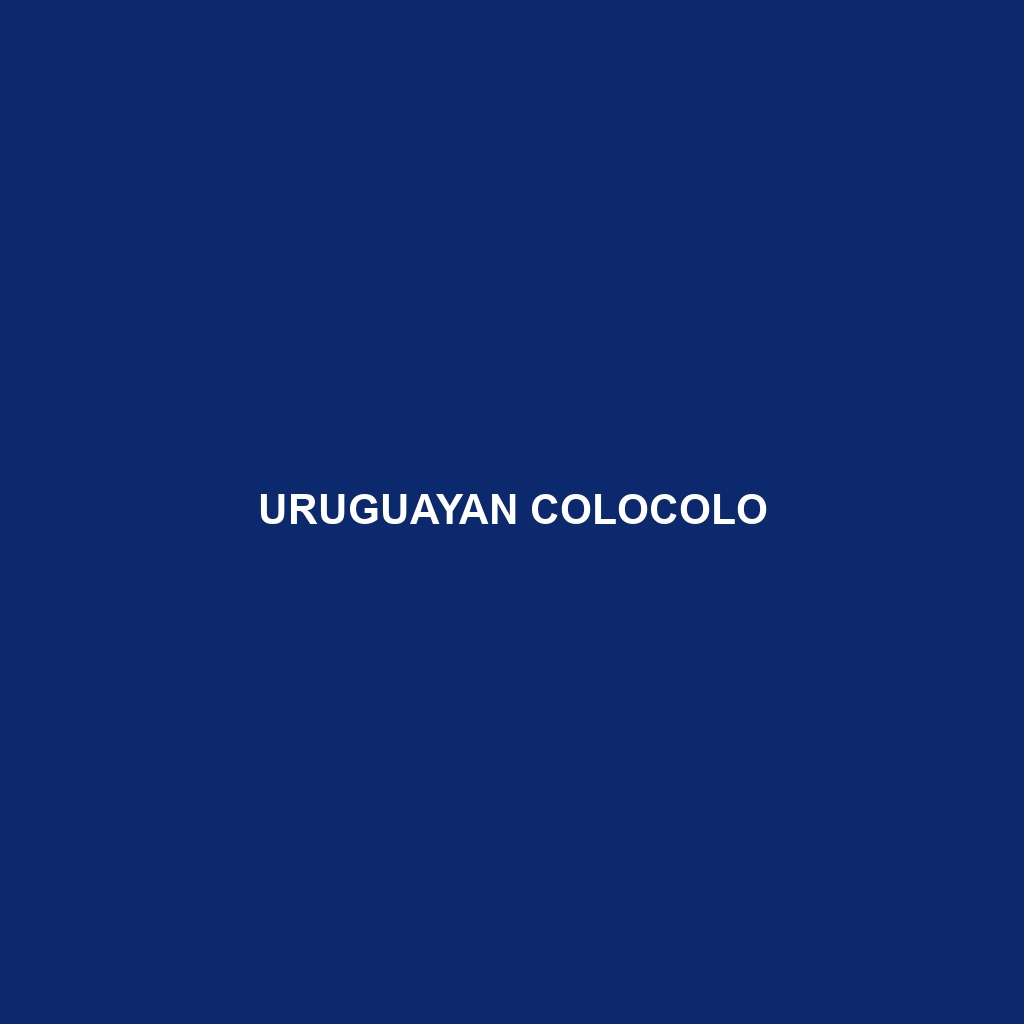Uruguayan Colocolo: An Overview
Common Name: Uruguayan Colocolo
Scientific Name: Leopardus colocola
Habitat
The Uruguayan Colocolo is primarily found in the grasslands and scrublands of Uruguay, Argentina, and parts of Brazil. This elusive feline favors open terrains, often residing in areas characterized by elevated vegetation, where it can easily stalk its prey. It thrives in the temperate regions of South America, particularly in locations with a mix of forest edges and open fields, providing the perfect balance for hunting.
Physical Characteristics
This medium-sized wild cat typically weighs between 8 to 12 pounds and measures about 24 to 35 inches in length, with a distinctive bushy tail that can add an additional 10 to 14 inches. The Uruguayan Colocolo features a slender body highlighted by a coat of short fur that can vary from light to dark tawny colors, often with spotted patterns that provide excellent camouflage in its natural habitat. Its rounded ears and elongated limbs further distinguish it from other feline species.
Behavior
Known for its solitary and elusive nature, the Uruguayan Colocolo exhibits primarily nocturnal behavior, hunting at night while resting during the day in sheltered spots. It is an agile climber and adept swimmer, often engaging in various vocalizations such as growling and hissing, especially during mating season. This species is also known for its territoriality, marking its territory with scent markings and vocal calls to ward off intruders.
Diet
The diet of the Uruguayan Colocolo mainly includes small mammals, birds, and sometimes reptiles. This opportunistic feeder utilizes its stealth and agility to ambush prey, often relying on its acute sense of hearing and sight to locate food. Common sources of food include rodents, hares, and various bird species, demonstrating a versatile hunting approach that adapts to available prey in a given environment.
Reproduction
During the breeding season, which typically occurs in late winter to early spring, Uruguayan Colocolos will engage in mating rituals that include vocalizations and physical displays. After a gestation period of about 70 to 80 days, females give birth to a litter of 2 to 4 kittens. The offspring are born blind and depend entirely on their mother for care, gradually becoming independent around 6 months of age. The mother is highly protective and teaches the young essential hunting and survival skills.
Conservation Status
The Uruguayan Colocolo is currently listed as vulnerable due to habitat loss and fragmentation, primarily driven by agricultural expansion and urban development. Conservation efforts are critical in preserving its natural habitats and protecting this species from further decline.
Interesting Facts
One fascinating aspect of the Uruguayan Colocolo is its adaptability; it can adjust to varying environmental conditions, making it a resilient species despite human encroachment. Additionally, it is often confused with similar species such as the Pampas Cat or the Geoffroy’s Cat, showcasing its unique yet fragile niche in the ecosystem.
Role in Ecosystem
The Uruguayan Colocolo plays a vital role in its ecosystem as both a predator and prey. By controlling small mammal populations, it helps maintain ecological balance within its habitat. Furthermore, it serves as an indicator species, reflecting the health of the ecosystem it inhabits. Its presence signifies a well-functioning habitat that can support diverse flora and fauna.
